guns.com ^ | Aug. 13, 2019 | Jeromy Knepp
Posted on 8/13/2019, 3:17:44 PM by PROCON
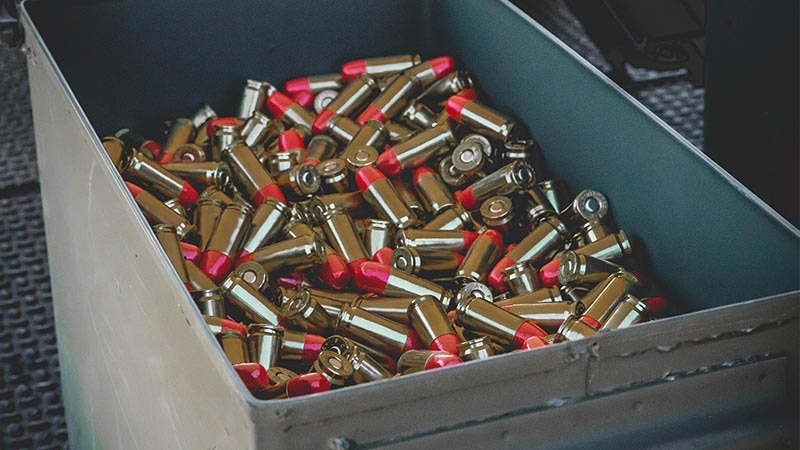
There are several types of ammunition styles designed for various purposes.(Photo: Jacki Billings/Guns.com)
Looking at a shelf full of handgun ammunition can feel like a cryptic message — .45 ACP 200-grain SWC, 9mm PARA 115-grain HAP, .357 Mag 158-grain HP+P, FMJ, LRN, FMJ just to name a few. Knowing what to look for can change the quality of accuracy and firearm function.Firearms companies, like the military, employ acronyms and abbreviations as descriptors to fit on boxes. With so many different calibers, bullet styles and load combinations, it can boggle the mind. What is necessary for home protection? At Guns.com, we can help with that enigma stigma of ammunition to help maximize handgun potential.
RIMFIRE ROUNDS
The .22 Long Rifle rimfire is one of the earliest forms of self-contained smokeless cartridges. One of the oldest cartridge options, it was developed by J. Stevens Arms and Tool Company in 1887. This simple little cartridge has been the jumping platform into the shooting sports for many.
Design-wise, the rimfire’s priming compound sits in a minuscule space in the interior rim of the cartridge. When the hammer or firing pin strikes the edge of the rim, it crushes the rim and ignites the compound. This results in the firing of the powder charge. Bullet options for the .22 LR are varied with uncoated lead, copper-coated lead and hollow point variations. Bullet weights start at 20 grains up to 60 grains in the subsonic.
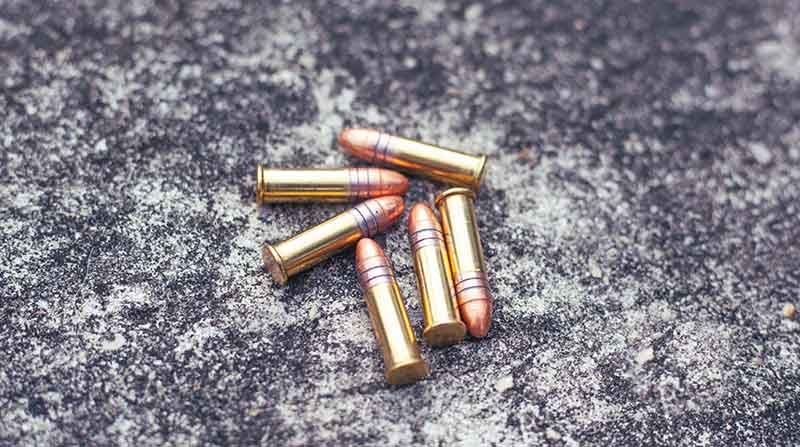
Small and affordable, rimfire brings with it low velocity, low recoil and low muzzle report making it a great option for new shooters. Highly regarded as a competitive cartridge, it is used in national, international and Olympic competitions.
Aguila Ammunition offers a neat little take on the .22 LR platform with a round called the Colibri. With a snail’s pace velocity of 420 feet-per-second, it works well for stealthy dispatch of bird feeder burglars. Other .22 LR options are subsonic and will have a decent sound report without a suppressor. Standard velocity, hypervelocity, CB, short and target grade options are all seen in the .22 LR line up.
CENTERFIRE CARTRIDGE
Uncoated or bare lead ammunition is not just for the .22 LR, enter modern centerfire cartridge ammunition. Unlike the rimfire cartridge, the centerfire cartridge uses boxer style primers placed in the middle of the case head. When the hammer or firing pin of the firearm strikes the primer, it crushes the primer wall against the anvil in the middle of the primer. This action causes a flame igniting the powder.
There are advantages of a boxer-primed centerfire cartridge. Capable of being reloaded multiple times after the first firing, centerfire pistol ammunition comes in a plethora of calibers. Most common are the 9mm, .38 Special, .357 Magnum, .44 Magnum, .40 S&W, .45 Long Colt, .45 ACP and most recently 10mm to name a few.
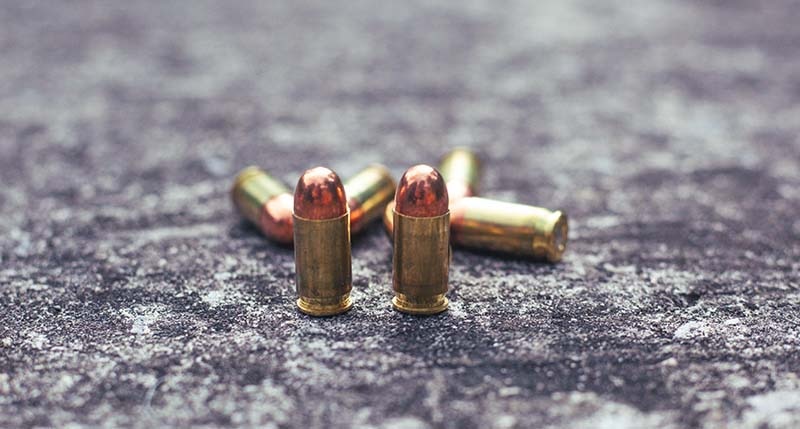
Pistol shooters will most often find uncoated or bare lead bullets in centerfire cartridges. These come in many different styles and can be purchased most commonly in lead round nose (LRN), lead wadcutter (LWC), lead semi-wadcutter (LSWC) and lead hollow point (LHP). Lead ammunition is generally the most affordable of pistol ammunitions making for great plinking and hunting ammunition. Often this style ammunition is used in Cowboy Action, IPSC and USPSA events as the soft lead splatters nicely on steel targets and cuts through cardboard with little resistance. Powder-coated and copper-coated lead bullets are also gaining steam among gun owners with the coating offering protection to the barrel rifling with little to no leading. It’s worth noting that coated bullets react similarly to targets as bare lead bullets.
WADCUTTER AMMUNITION
Wadcutter ammunition or WC is a great round for target applications. The squared edges help to cut the paper cleanly giving clear marks for maximum scores. It is also used in heavy bullet combinations like magnum caliber pistols for maximum energy dispersion and penetration in game.
This style of bullet can be problematic for some semi-automatic pistols, though. The sharp edge of a full wadcutter tends to catch and not feed properly in the chamber. An alternative for the wadcutter for semi-automatic pistols is the semi-wadcutter bullet or SWC. This style bullet is used for target, cowboy action, IPSC and USPSA competition because it offers great accuracy and feeding from a magazine of a semi-auto pistol. The SWC has a rebated cone shape from the full diameter of the bullet and atop the cone is a blunt flat point.
Semi-wadcutter bullets come in full metal jacket and jacketed soft point bullets that work great for hunting as well as hollow points in both jacketed and semi-jacketed.
FULL METAL JACKETS
Full metal jacketed bullets, or FMJ, are most commonly used in bulk ammunition. Designed in 1882 by Swiss Colonel Eduard Rubin, the FMJ offers better feeding characteristic when used by firearms with auto loading and repeat loading abilities. This style of jacketed round comes in all caliber types both in rifle and pistols. Most come in a round nose style or round nose flat point.
FMJ ammunition proves great for plinking and target practice and is also beneficial when trying to breach a hard target within the capability of the bullet’s design. The drawback to the FMJ is over-penetration. If you are using the FMJ for home defense and hunting purposes, be sure of your backstop.
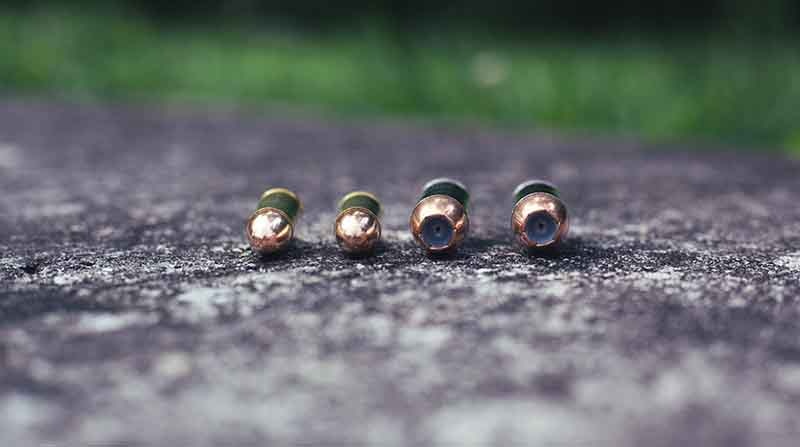
HOLLOW POINTS
The hollow point bullet, or HP, is a bullet created for maximum damage with minimum penetration making it a great option for home defense. Once the bullet penetrates the intended target, it rapidly expands dumping all of it speed and energy in the target.
HPs are accurate and also come in many variations such as jacketed hollow point (JHP), semi-jacketed soft point hollow point (JSP HP) or an all lead hollow point. For competition purposes, some companies take it a step further offering their own branded ammo specifically for serious competition use, like the Hornady Action Pistol ammunition.
+P, +P+
With interest in handguns for hunting and home protection increasing, more powerful rounds have been created to meet this demand. Many a military man complained when they dropped the .45 ACP for the 9mm with concerns raised as to the 9mm’s “knockdown power.” +P and +P+ options for pistols became viable options for those concerned about power.
These ammunitions use higher pressures for greater velocity. +P and +P+ were both designed for home defense. Word of caution, only use +P and +P+ ammunition in handguns designed to shoot it. Not all handguns are created equal.
FINAL THOUGHTS
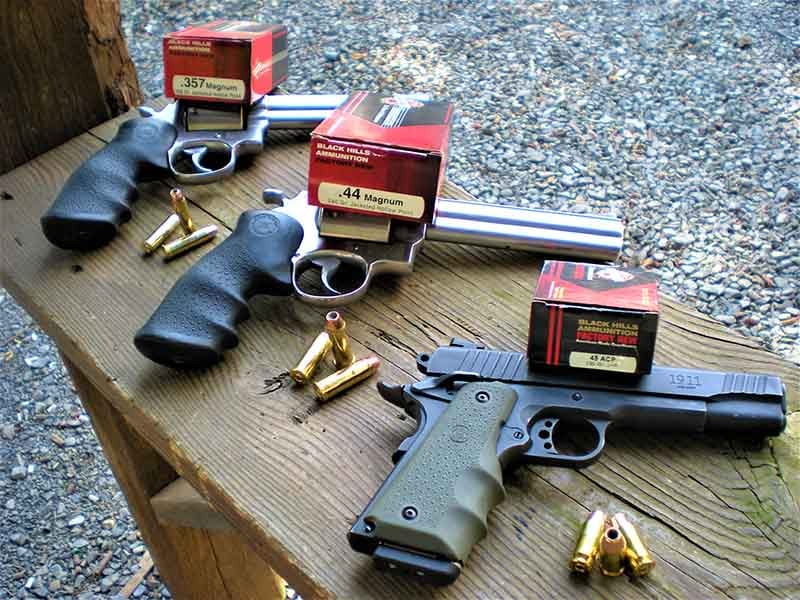
With the implementation of legislation in certain state’s regarding the use of lead bullets, ammo companies have been forced to adapt to the needs of citizens in anti-lead states. This has resulted in offerings of solid copper and brass projectiles for handguns. These rounds are can be used for hunting and target purposes, but they are often more expensive than traditional lead rounds.
While this list is not all-inclusive, it should get any gun owner confused about the ABCs of pistol ammunition pointed in the right direction.
Stolen
FR
Comments
http://www.freerepublic.com/focus/f-bloggers/3771509/posts
To: mylife; Joe Brower; MaxMax; Randy Larsen; waterhill; Envisioning; AZ .44 MAG; umgud; ...
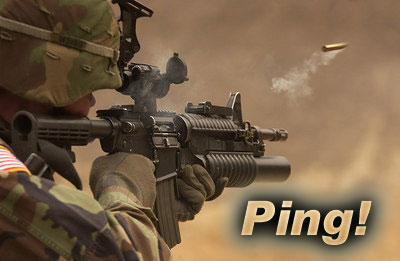


No comments:
Post a Comment